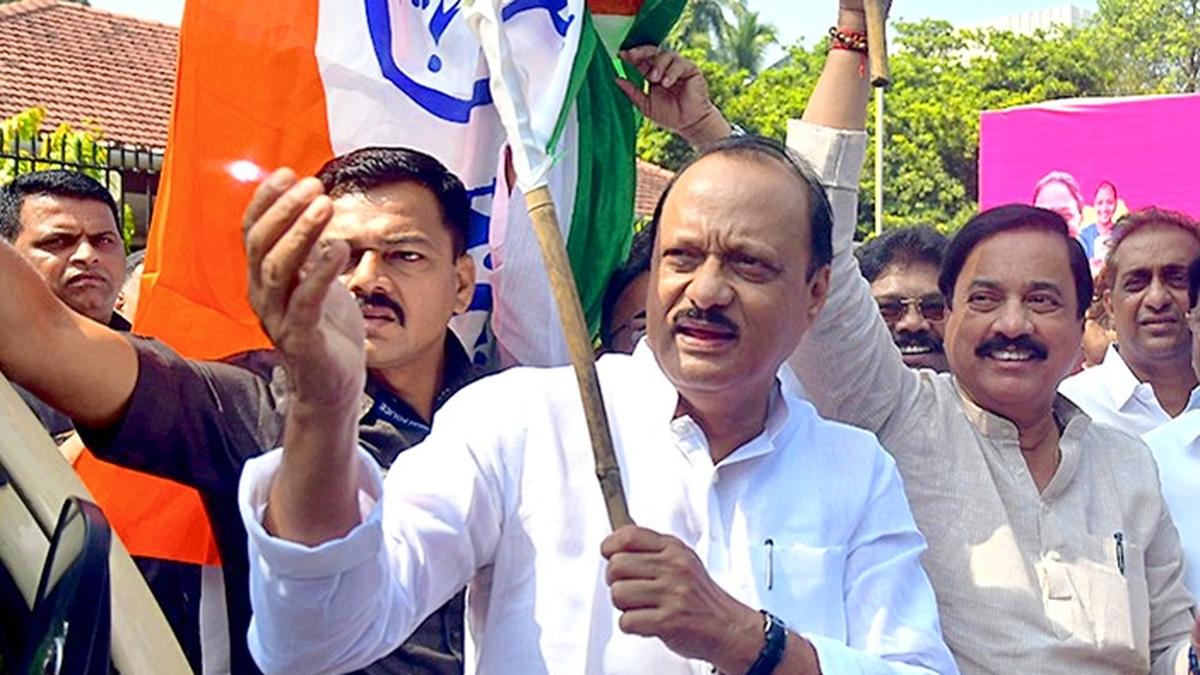A view of Sri Damodaram Sanjeevaiah thermal power station at Nelaturu in Nellore district.
| Photo Credit: The Hindu
The initial exuberance of the NDA government in Andhra Pradesh quickly faded as it realised the daunting task of moving the bifurcation-hit State forward.
The government is concerned about the power sector, which, according to a White Paper released by Chief Minister N. Chandrababu Naidu on July 9, was beset by a huge ‘legacy loss’ of ₹1,29,503 crore.
Given the pressing need to put the AP-Genco, AP-Transco, and the DISCOMs back on track, the government started revisiting the reforms in the power sector, aiming to restore its position as the top in the country. The due priority is to streamline supply to industrial consumers, and to the farm sector for nine hours during daytime.
The government noted that the operational and financial parameters of the power utilities have deteriorated in the last five years. While conducting its study, it sought suggestions from all stakeholders.
Financially, the outstanding power sector loans amount to nearly ₹1.10 lakh crore, of which roughly ₹25,000 crore are owed by the government to DISCOMs for pending subsidy arrears and charges payable by government departments for electricity consumed by office buildings, lift irrigation schemes, and local bodies.
Besides, DISCOMs made partial payments to Independent Power Producers (IPPs) during the controversial review of the long-term solar and wind Power Purchase Agreements (PPAs) in 2019-24 and they [DISCOMs] are obliged to pay the remaining amounts with interest having lost their case in the court.
Notably, the Ministry of Power had warned of the consequences of reviewing or negotiating the PPAs, but to no avail, as the YSR Congress Party (YSRCP) government went ahead with its decision.
The total generation capacity increased from approximately 5,460 Megawatts (MW) in 2014-15, when the TDP came to power, to about 14,930 MW five years later.
A notable project under way is the 2,750-MW Integrated Renewable Energy Project (IREP) at Pinnapuram, touted as the world’s largest Gigawatt-scale integrated project, comprising 1,200 MW of Pumped Storage Hydropower (PSH), 1,000 MW of solar and 550 MW wind power, expandable to a 7,400 MW.
While the Commercial Operation Date of the IREP is still a few months away and other PSH projects are in various stages, the AP-Genco commissioned two new thermal power units of 800 MW last year.

The generation side has, therefore, something to cheer about, despite the looming obligation to retire obsolete thermal units numbering 11 of 210 MW, at the Narla Tatarao, Sri Damodaram Sanjeevaiah, and Rayalaseema Thermal Power Stations, after 2030.
Another issue is the inordinate delay in constructing the 960-MW Polavaram hydroelectric power plant, which suffered a major setback due to the termination of the turnkey contractor and the hiring of a new one. This resulted in protracted litigation, including an ongoing arbitration process expected to cost a whopping ₹1,500 crore. The Polavaram hydropower plant was scheduled to be commissioned in May 2023. There is an estimated generation loss of 3,000 Million Units (MU) till the latest expected commissioning date of January 2026. The delays in various projects entailed a huge burden in terms of the cost of power purchases. The precarious financial position of the utilities, mainly the DISCOMs, has been a cause for worry.
It is pertinent to mention that the YSRCP government allegedly raised power tariffs nine times during its tenure (2019-24), in the form of true-up and other charges to shore up its finances.
Meanwhile, the TDP claimed that the government did not jack up the tariffs even once, and the subsidy component increased from ₹2,607 crore in 2014- 15 to ₹6,575 crore by the end of 2018-19.
The deliberate backing down of some generators in 2019-22 to buy power from short-term sources had major financial implications. These are only some aspects of the State power sector.
The government’s ultimate objective is to provide a quality, reliable, and affordable power supply for 24 hours.
The government has to do a tough balancing act of carefully managing the financial standing of the utilities (mainly DISCOMs) and meeting the burgeoning grid demand by making incremental renewable energy capacity additions.





